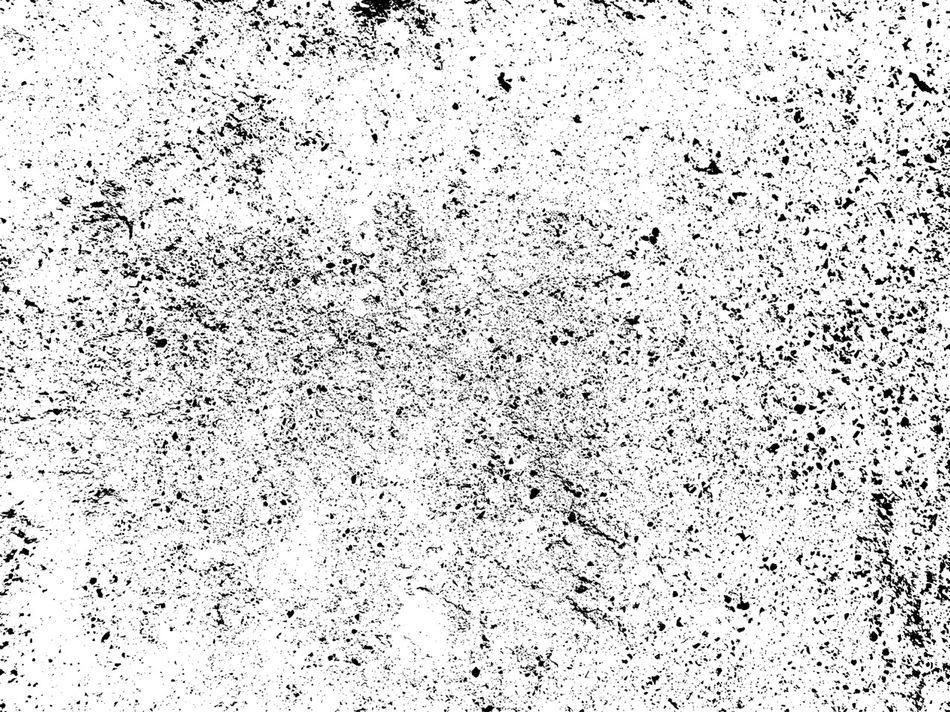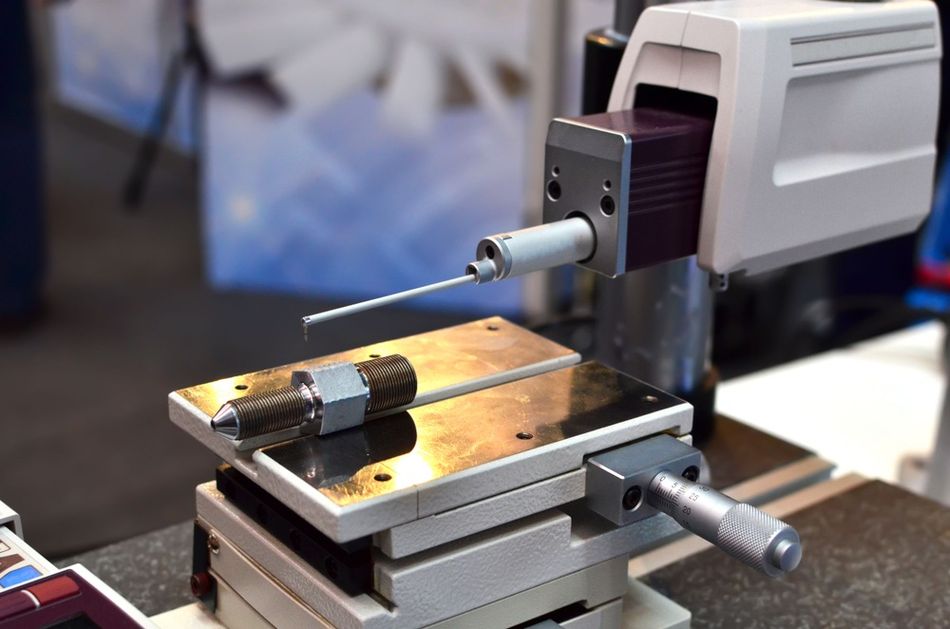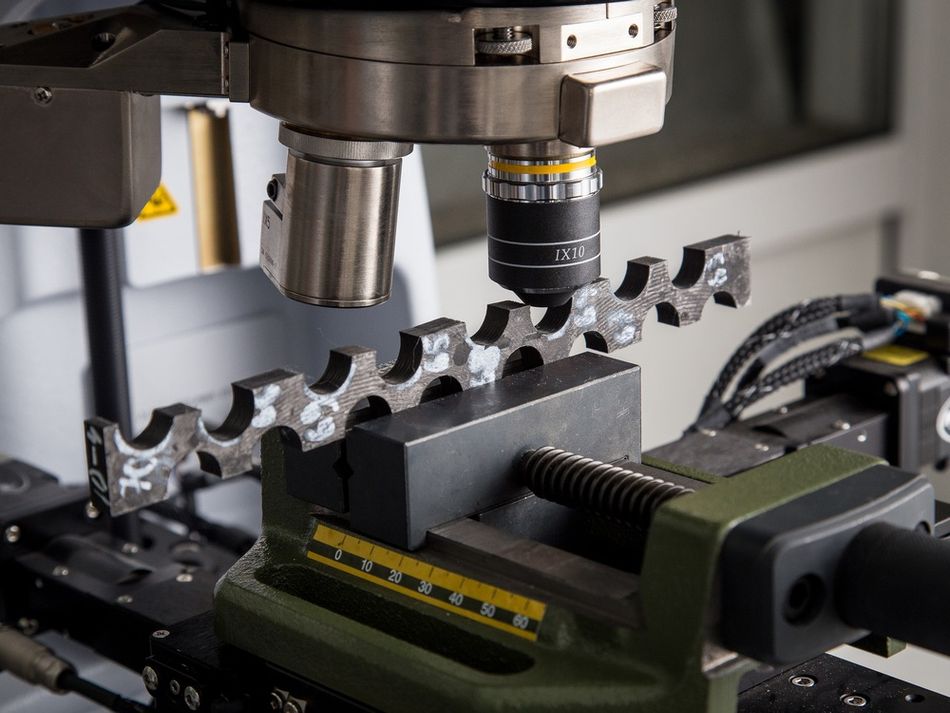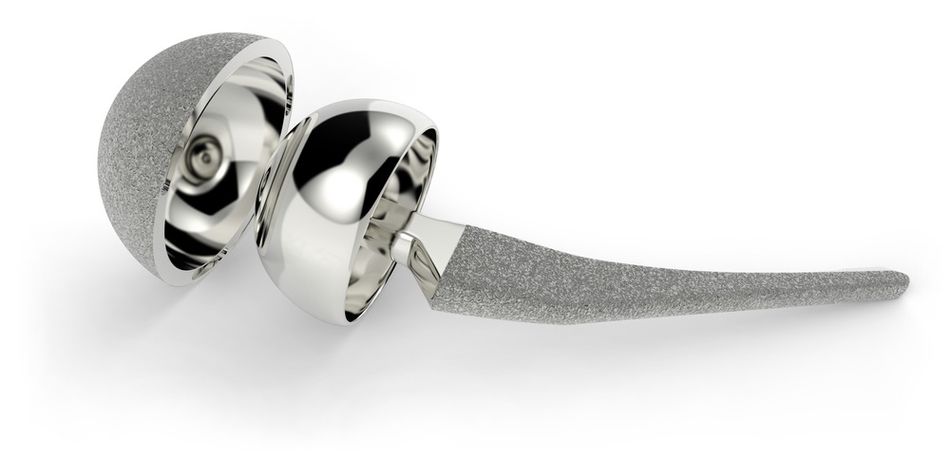Measuring Surface Roughness: A Comprehensive Guide
Measuring surface roughness allows metrologists to establish the roughness of a surface for quality control or other purposes. But how exactly is it done?
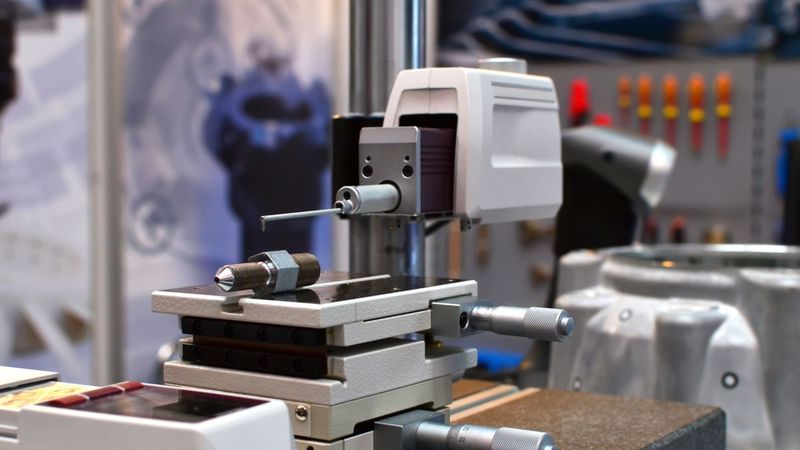
Surface roughness can be measured with a profilometer
Surface roughness is a critical aspect of many industrial processes, as it can significantly impact the performance, quality, and functionality of manufactured products. In this article, we will explore the concept of measuring surface roughness, its importance in various industries, and the methods used for measurement. We will also discuss the challenges associated with measuring surface roughness and how to interpret the results of these measurements. By understanding the principles and techniques involved in measuring surface roughness, professionals can make informed decisions to optimize their manufacturing processes and improve product quality.
Understanding Surface Roughness
Surface roughness, in a technical context, refers to the fine irregularities on the surface of a material. These irregularities can be a result of the manufacturing process, wear, or even the nature of the material itself. For example, a machined surface may be very different to an extruded surface, even if the material is the same. The scale of these surface irregularities can range from the microscopic level, such as the grain structure of the material, to the macroscopic level, like visible scratches or pits.
The factors contributing to surface texture and roughness are numerous and can be broadly categorized into three groups: material factors, process factors, and environmental factors. Material factors include the inherent properties of the material, such as its hardness, ductility, and grain structure. Process factors encompass the methods and conditions of manufacturing, including the type of machining process used, the cutting tool geometry, feed rate, and cutting speed. Environmental factors that contribute to smooth or rough surfaces involve conditions like temperature and humidity during the manufacturing process, which can influence the material's behavior and thus the resulting surface finish.
Surface roughness has significant implications in various applications. For instance, in mechanical engineering, the surface roughness of a component can affect its friction characteristics, wear resistance, and ability to retain lubricants. In the electronics industry, the surface roughness of semiconductor materials can influence the performance of electronic devices. In the biomedical field, the surface roughness of implants can affect cell adhesion and tissue growth. Therefore, understanding and controlling surface roughness is crucial in many areas of science and technology.
Recommended reading: Introduction to Surface Functionalization: Types and Applications
Importance of Measuring Surface Roughness
The measurement of surface roughness is a key quality control process that can significantly impact the performance and lifespan of a product. For instance, in mechanical components, a high level of surface roughness can lead to increased friction, rapid wear, and premature failure. Conversely, a surface that is too smooth may not retain sufficient lubrication, leading to increased friction and wear. Researchers have shown that “lubricant load carrying capacity is largely affected by surface texture, roughness, and their interactions.”[1]
In the electronics industry, the surface roughness of semiconductor materials can directly influence the performance of electronic devices. High surface roughness can lead to increased electrical resistance, reduced electron mobility, and increased heat generation, all of which can degrade the performance and reliability of electronic devices.
In the biomedical field, the surface roughness of implants can significantly affect their interaction with biological tissues. A surface that is too smooth may not promote cell adhesion and tissue growth, leading to poor integration of the implant with the surrounding tissue, while a surface that is too rough may cause excessive tissue reaction and inflammation. On the other hand, some researchers have noted that the “details of the textured surfaces can be more determining on cell adhesion and proliferation, rather than their roughness degree.”[2]
In addition to affecting product performance and quality, surface roughness can also influence the aesthetic appeal of a product. In industries such as automotive and consumer goods, where the visual appearance of a product is a key selling point, smooth surfaces are of paramount importance.
Therefore, measuring surface roughness is not just about ensuring compliance with technical specifications. It is about understanding the relationship between surface characteristics and product performance, quality, and appeal. By accurately measuring and controlling surface roughness, manufacturers can optimize their processes, improve product quality, and meet the diverse needs of their customers.
Methods of Measuring Surface Roughness
There are several methods used to measure surface roughness, each with its own set of principles, advantages, and disadvantages. These methods can be broadly categorized into contact and non-contact methods.
Contact Methods
Contact methods involve the use of a probe or stylus that physically interacts with the surface being measured. The probe moves across the surface, and the vertical displacement of the probe is recorded as it encounters the surface irregularities. This data is then used to calculate surface roughness parameters. One of the most common contact methods is stylus profilometry.
Stylus Profilometry
Stylus profilometry is a widely used contact method for measuring surface roughness. It involves the use of a diamond-tipped stylus that is dragged across the surface at a constant speed. The stylus profilometer follows the surface contours along a line, and its vertical displacement is recorded by a high-resolution linear encoder. This displacement data is then processed to generate a surface profile and calculate surface roughness parameters.
Stylus profilometry is known for its high accuracy and repeatability, making it suitable for a wide range of applications. However, it has some limitations, such as the potential for the stylus to damage delicate surfaces. Additionally, the method is inherently slow due to the need for physical contact and movement across the surface, which can be a disadvantage in high-volume manufacturing environments.
Despite these limitations, stylus profilometry remains a popular choice for surface roughness measurement due to its proven reliability and the detailed information it provides about the surface profile. It is used in a wide range of industries, including automotive, aerospace, electronics, and biomedical, to ensure product quality and performance.
Non-Contact Methods
Non-contact methods of measuring surface roughness do not require physical interaction between the measuring instrument and the surface. These methods typically rely on optical or electromagnetic principles to obtain surface information. Non-contact methods offer several advantages over contact methods, such as faster measurement times, no risk of damaging delicate surfaces, and the ability to measure a wider range of materials. Two common non-contact methods are optical profilometry and atomic force microscopy.
Optical Profilometry
Optical profilometry is a non-contact method that uses light to measure surface roughness. One type of optical profilometry works by projecting a structured light pattern onto the surface and capturing the reflected light with a camera or detector, though other light sources such as lasers can also be used. The distortion of the reflected light pattern provides information about the surface topography, which can be used to calculate surface roughness parameters.
Optical profilometry offers several advantages over contact methods, such as faster measurement times, no risk of damaging the surface, the ability to scan an entire 3D area rather than a 2D line, and the ability to measure a wide range of materials, including transparent and reflective surfaces. However, it may be less accurate than contact methods for surfaces with complex geometries or steep slopes, as the light may not be able to reach all areas of the surface.
Recommended reading: Point Clouds Explained: Scanning, Processing, 3D Models
Atomic Force Microscopy
Atomic force microscopy (AFM) is another non-contact method used to measure surface roughness at the nanometer scale. AFM works by using a sharp probe, known as a cantilever, that is positioned close to the surface without touching it. As the probe scans the surface, the attractive and repulsive forces between the probe and the surface cause the cantilever to deflect. This deflection is measured using a laser beam that is reflected off the cantilever and onto a photodetector.
AFM provides extremely high-resolution measurements of surface roughness, making it suitable for applications in nanotechnology, materials science, and semiconductor manufacturing. However, AFM has some limitations, such as a relatively small scanning area and slow measurement times compared to other methods. Additionally, AFM requires a high level of expertise to operate and interpret the results, which can be a barrier to its widespread adoption.
Recommended reading: Atomic Force Microscopy Explained: Principles, Construction, Working, and Applications
Surface Roughness Parameters
Surface roughness is quantified using a set of parameters that describe surface characteristics. These parameters are calculated from the surface data obtained from the measurement methods discussed earlier. Roughness parameters used in metrology can be divided into two groups: profile parameters and areal parameters.
The most common parameter used to describe surface roughness is Ra (arithmetic average roughness), which is the average of profile height deviations from the “mean line” — the reference line that deviations are measured from. This is a useful measurement when using a 2D measurement system like stylus profilometry, though it is arguably less useful than areal parameters like the equivalent Sa. Other parameters indicate values such as the maximum height of peaks and valleys, measured in micrometers or microinches.
Profile Parameters
Profile parameters (indicated by the letter R followed by another character) relate to measurements of roughness along a line, calculated using a roughness profile obtained from a 2D measurement process such as stylus profilometry. They are standardized using ISO 21920-2:2021, a “document [that] specifies terms, definitions and parameters for the determination of surface texture by profile methods.”
Profile parameters include:
Ra (average roughness or average profile height deviations from mean line)
Rq (root mean square roughness)
Rv (maximum valley depth)
Rp (maximum peak height)
Rz (maximum peak to valley height over set distance)
Rsk (skewness of the profile)
Areal Parameters
Areal parameters (indicated by the letter S followed by another character) relate to measurements across a surface and are standardized using ISO 25178-2:2021, a “document [that] specifies parameters for the determination of surface texture by areal methods.” Optical non-contact techniques can be used for areal measurements. A 2021 study suggests that “areal measurement achieves better results, since a higher number of measuring points are included and the measuring field is independent of direction.”[3]
Areal parameters include:
Sa (arithmetic mean height of the surface)
Sq (root mean square height of the surface)
Sv (maximum valley depth)
Sp (maximum peak height)
Sz (maximum peak to valley height over set distance)
Ssk (skewness of height distribution)
Interpreting Surface Roughness Measurements
Interpreting surface roughness measurements involves understanding the relationship between the measured parameters and the performance of the part in its intended application. This requires a thorough understanding of the surface roughness parameters, as well as the specific requirements of the application.
One of the first steps in interpreting surface roughness measurements is to compare the measured parameters to the specified tolerances for the part. This involves checking whether the measured values fall within the acceptable range defined by the design specifications. If the measured values are outside the specified tolerances, it may indicate a problem with the manufacturing process or the material itself.
Another important aspect of interpreting surface roughness measurements is understanding the impact of the measured parameters on the part's performance. For example, in mechanical components, if the highest peak is well above the mean line, the surface may suffer increased friction and wear that leads to issues like galling, while a surface that is too smooth — or one whose lowest valleys are not especially deep — may not retain sufficient lubrication. In such cases, it is essential to understand the relationship between the surface roughness parameters and the performance characteristics of the part, such as friction, wear, and lubrication retention.
In some cases, the interpretation of surface roughness measurements may require the use of advanced statistical analysis techniques, such as regression analysis or machine learning algorithms. These techniques can help identify patterns and relationships between the measured parameters and the part's performance, allowing for more accurate predictions and optimization of the manufacturing process.
Challenges in Measuring Surface Roughness
Measuring surface roughness presents several challenges, which can be attributed to the nature of the surfaces being measured, the measurement methods used, and the interpretation of the measurement results.
One of the primary challenges is the inherent variability of real-world surfaces. Surfaces can exhibit a wide range of features, such as peaks, valleys, and waviness, which can vary significantly over the surface area. This variability can make it difficult to obtain a representative measurement of the surface roughness, especially for surfaces with complex geometries or heterogeneous material properties. This issue can be mitigated somewhat by using areal measurements, where the metrologist does not have to establish a single mean line from which to take measurements.
Another challenge is the limitations of the measurement methods themselves. For example, contact methods such as stylus profilometry can potentially damage delicate surfaces, while non-contact methods such as optical profilometry may struggle with surfaces that are highly reflective or have steep slopes. Furthermore, all measurement methods have inherent uncertainties, which can be influenced by factors such as the calibration of the instrument, the environmental conditions during measurement, and the operator's skill and experience.
The interpretation of surface roughness measurements also presents challenges. The surface roughness parameters provide a mathematical description of the surface, but relating these parameters to the part's performance in its intended application can be complex. This requires a deep understanding of the relationship between surface roughness and functional properties such as friction, wear, and sealing ability, which can be influenced by a multitude of factors beyond the surface roughness itself.
Finally, there is the challenge of managing the large volumes of data generated by surface roughness measurements. Modern measurement instruments, especially optical devices, can generate high-resolution surface profiles consisting of millions of data points, which require sophisticated data analysis techniques to extract meaningful information. This necessitates the use of advanced statistical methods and machine learning algorithms, which can add complexity to the measurement process.
Conclusion
Surface roughness measurement is an important task in many industries, including manufacturing, materials science, and engineering. It involves a variety of methods, each with its own advantages and disadvantages, and requires an understanding of surface roughness parameters and how they relate to the performance of the part in its intended application. Despite the challenges associated with measuring surface roughness, advancements in measurement technology and data analysis techniques continue to improve the accuracy and efficiency of these measurements, enabling better quality control and optimization of manufacturing processes.
FAQs
What is surface roughness?
Surface roughness refers to the fine irregularities on the surface of a material, which are typically caused by the manufacturing process. It is a key characteristic of the surface that can significantly affect the performance of the part in its intended application.
How is surface roughness measured?
Surface roughness can be measured using a variety of methods, which can be broadly categorized into contact and non-contact methods. Contact methods involve a probe that physically interacts with the surface, while non-contact methods use optical or electromagnetic principles to obtain surface information.
What are surface roughness parameters?
Surface roughness parameters like Ra are numerical values that describe the characteristics of the surface. They are calculated from the surface profile or areal data obtained from the measurement methods and can provide information about the vertical deviations of the surface, the distribution of the roughness over the surface area, and other characteristics.
What are the challenges in measuring surface roughness?
Challenges in measuring surface roughness include the inherent variability of surfaces, limitations of the measurement methods, complexity in interpreting the measurement results, and managing the large volumes of data generated by the measurements.
Why is measuring surface roughness important?
Measuring surface roughness is important because it can significantly affect the performance of the part in its intended application. It allows for quality control during the manufacturing process and can help predict how the part will perform in terms of factors such as friction, wear, and sealing ability.
References
[1] Bachchhav B, Bagchi H. Effect of surface roughness on friction and lubrication regimes. Materials Today: Proceedings. 2021 Jan 1;38:169-73.
[2] Rosales-Leal JI, Rodríguez-Valverde MA, Mazzaglia G, Ramón-Torregrosa PJ, Díaz-Rodríguez L, García-Martínez O, Vallecillo-Capilla M, Ruiz C, Cabrerizo-Vílchez MA. Effect of roughness, wettability and morphology of engineered titanium surfaces on osteoblast-like cell adhesion. Colloids and Surfaces A: Physicochemical and Engineering Aspects. 2010 Aug 5;365(1-3):222-9.
[3] Schmidt J, Thorenz B, Schreiner F, Döpper F. Comparison of areal and profile surface measurement methods for evaluating surface properties of machined components. Procedia CIRP. 2021 Jan 1;102:459-64.

